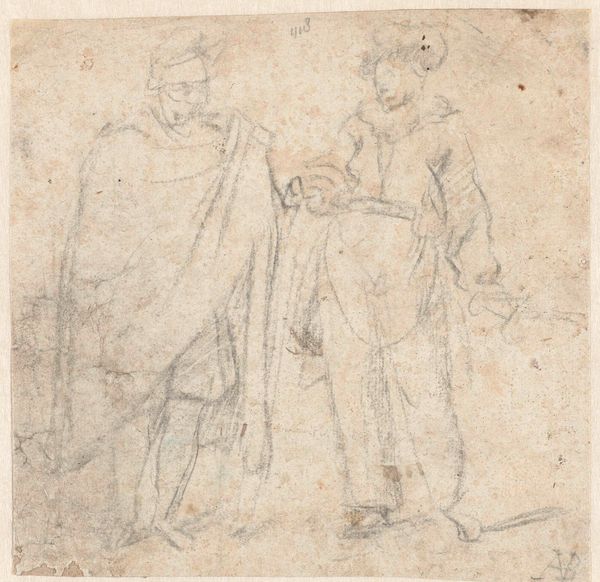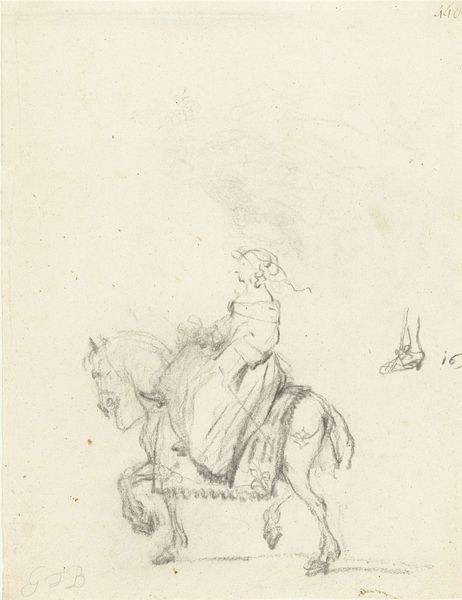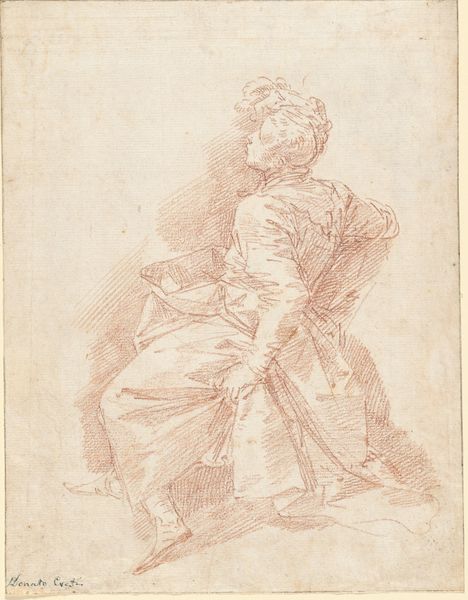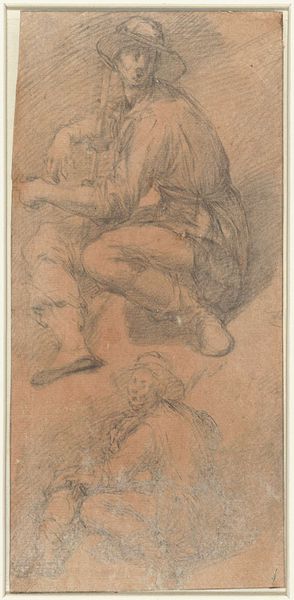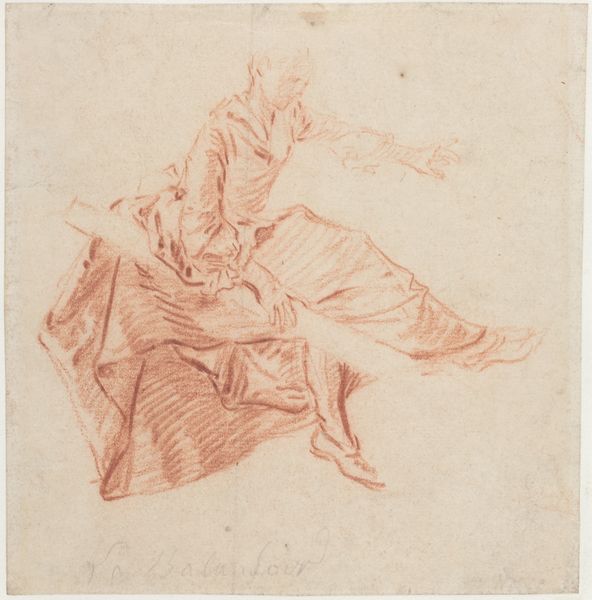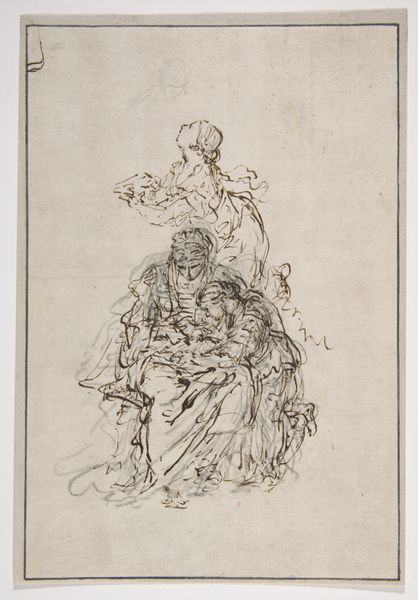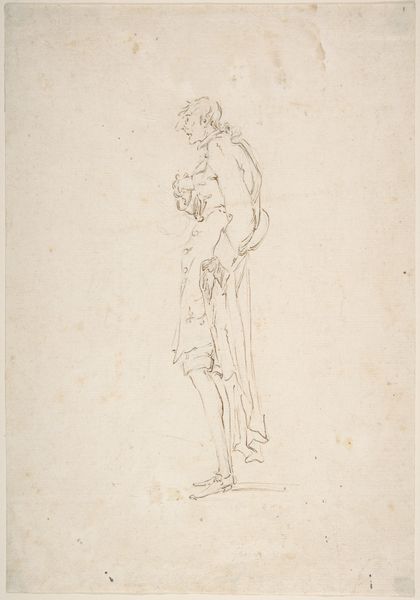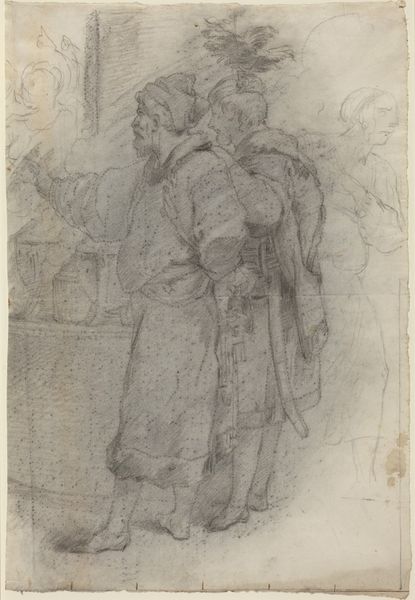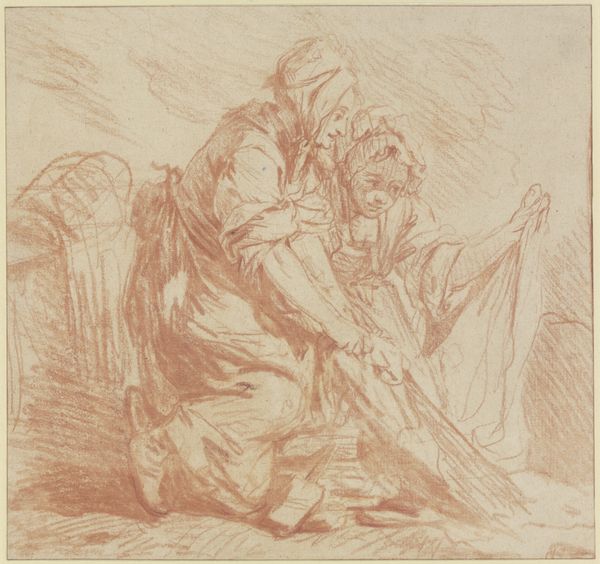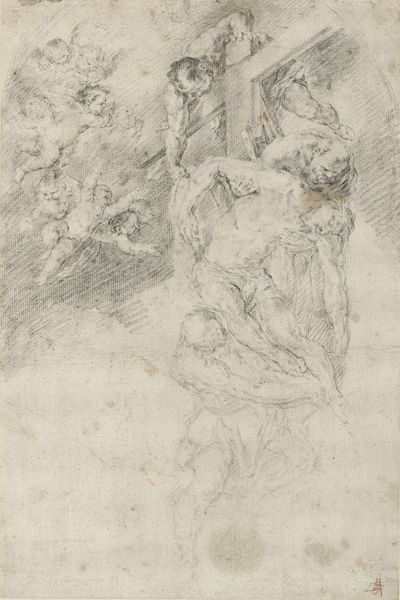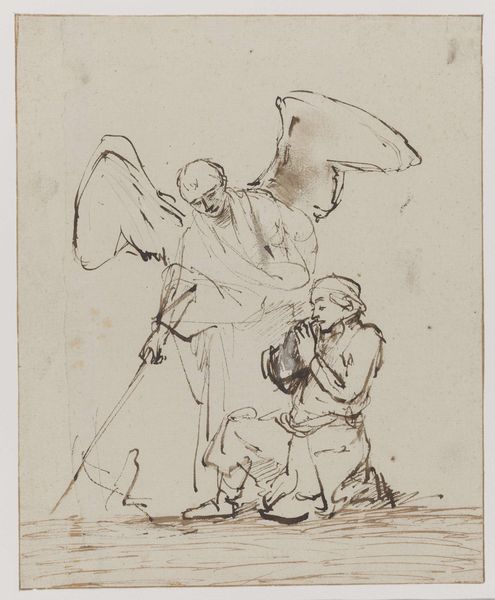
drawing, pencil
#
portrait
#
drawing
#
pencil sketch
#
etching
#
mannerism
#
figuration
#
pencil
Dimensions: height 220 mm, width 182 mm
Copyright: Rijks Museum: Open Domain
Curator: This is "Schets van twee staande mannen," or "Sketch of two standing men," dating from 1590 to 1620. It's currently held here at the Rijksmuseum and attributed to an anonymous artist. Editor: My immediate reaction is its simplicity. There’s an arresting vulnerability in these quickly rendered figures, as if we've caught them mid-thought, perhaps eavesdropped on a private moment. What can you tell me about the technique used? Curator: The piece appears to be created using primarily pencil, with etching present to deepen contrast. Notice how the artist uses hatching to describe the figures' forms and clothing. Editor: That's fascinating. Given the time, I'm curious about the purpose behind such a sketch. Was this preparatory for a larger painting, a study of drapery, or something else entirely? Who would've even seen this, let alone valued it? Curator: That's the puzzle, isn't it? As the artist is anonymous, this is now very challenging. The Mannerist style suggests the elite class, implying patronage from those of wealth or status. Considering the scarcity of drawing paper at that time, its existence challenges how and for whom drawings circulated. Did they have a public life, influencing artists, or where they mainly kept behind doors? Editor: Interesting. Looking at the composition, the obscured face of the primary figure intrigues me, while the other looms, unfinished in the background. I wonder, does that relate to the contemporary perceptions around portraiture and identity during this period? Was this incompleteness perhaps deliberate, highlighting a social anxiety, even? Curator: Potentially! Also, looking closer, observe the different qualities of the line, where some contours seem confident and reinforced while others are faint, tentative. We may assume the materials or tools that created them hold meaning of process too. Editor: So, in your view, understanding how this was made really changes our historical understanding. Curator: Absolutely. And from my viewpoint, the historical background contextualises our own responses today! Editor: This encounter makes one reflect on the purpose of preliminary sketches like these—almost ghostlike glimpses into past artistic processes. Curator: Exactly—they give a material reality and invite the viewer to witness both intention and chance in their historical contexts!
Comments
No comments
Be the first to comment and join the conversation on the ultimate creative platform.
